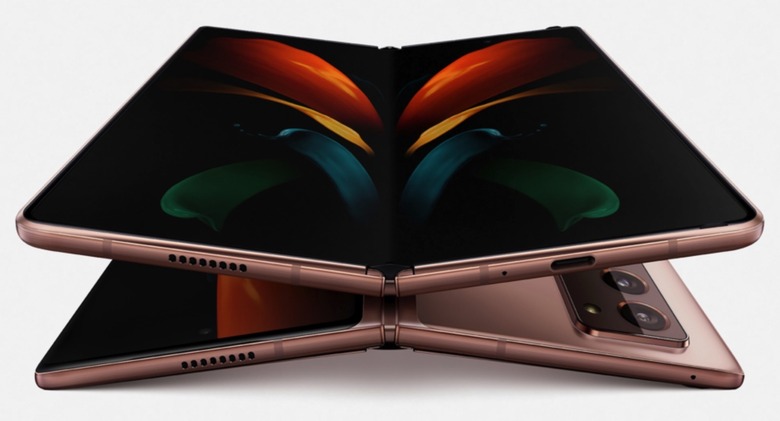Samsung's First Foldable Tablet Looks Amazing In These Leaked Renders
Samsung will launch two new foldable smartphones this summer: The Galaxy Z Fold 3 and Galaxy Z Flip 3. The Fold has a foldable screen on the inside and an external screen on the outside. The Flip's foldable display is placed internally, with a smaller external screen present on one side. The difference between the two devices is that the Fold unfolds into a tablet-like device, while the Flip is a clamshell foldable that looks a lot like a Galaxy S phone when unfolded.
But Samsung is also working on other designs that incorporate folding displays, including smartphones and tablets. Samsung might not be ready to talk about these designs right now, but the company is forced to disclose these innovations via patent documentation that includes revealing illustrations. While there's no telling whether Samsung will make any commercial devices featuring those designs, it's clear that Samsung is interested in exploring all sorts of foldable handset designs. The following one is particularly exciting, as it shows us what the evolution of the Fold might be. Samsung might launch a Fold Tab device in the future that would work both as a tablet and a smartphone, thanks to screens that fold inwards and outwards, depending on the user's needs.
Found by Dutch blog LetsGoDigital, the following design is based on Samsung patents from April 2021 and May 2021 that detail foldable devices featuring two hinges and three display sides.
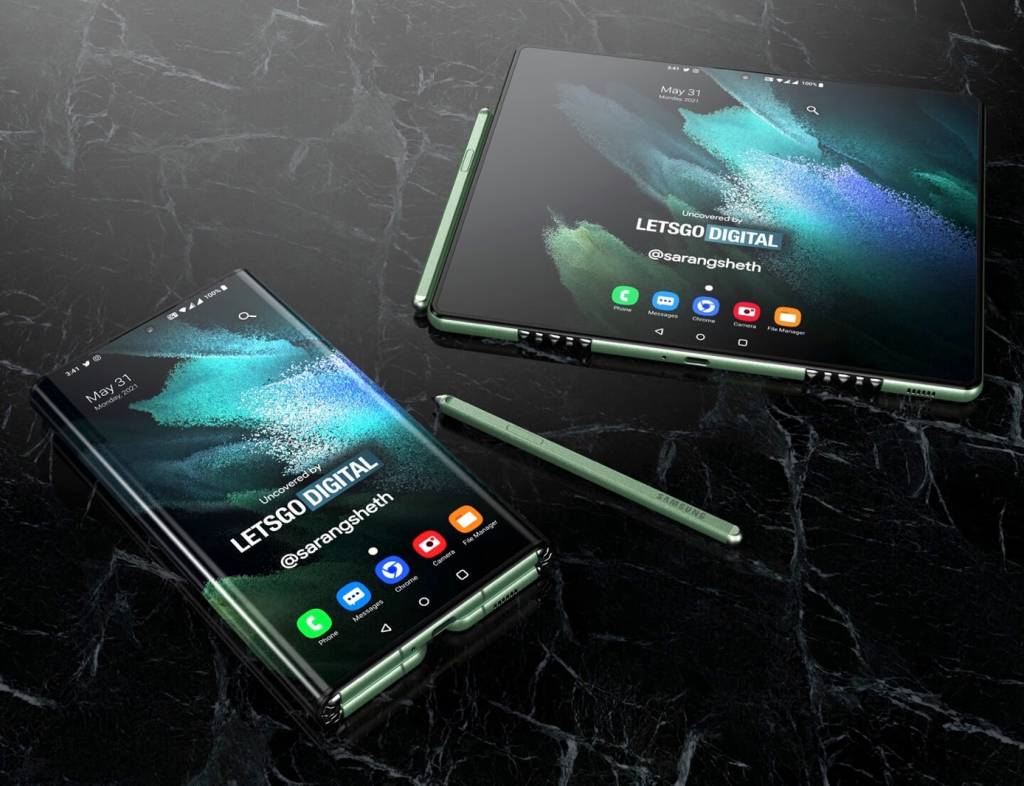
Samsung Galaxy Z Fold Tab concept based on patent illustrations: Phone and tablet modes.
This "Galaxy Z Fold Tab" device can be used in full tablet mode by extending the two side displays. It can also work as a phone with a large main screen that bends around the corners. In this position, the two side displays are folded behind the middle part.
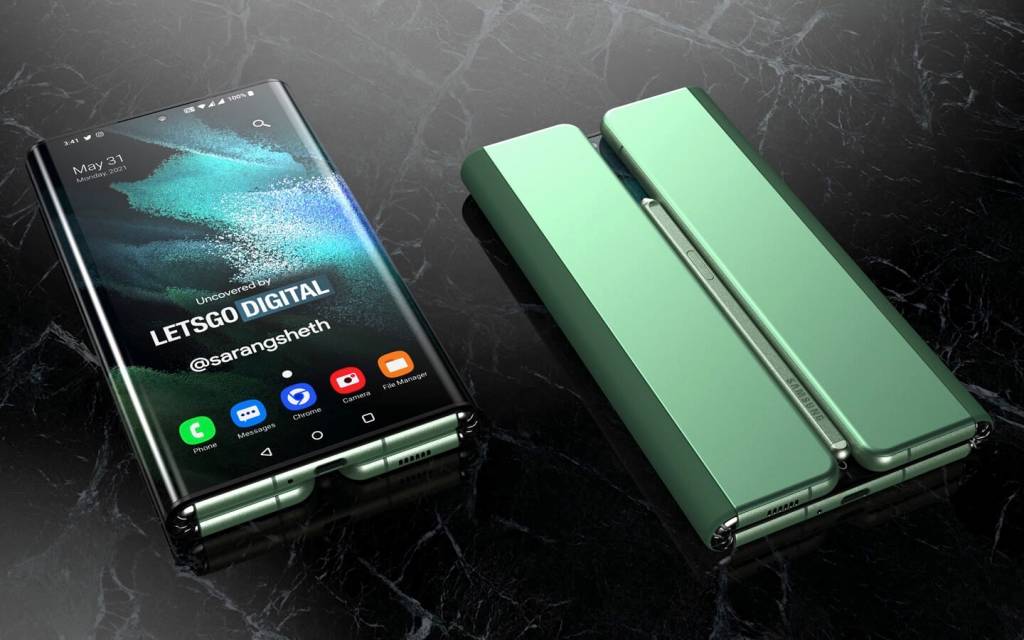
Samsung Galaxy Z Fold Tab concept based on patent illustrations: Screen folded outwards (left) and inwards (right).
The obvious problem with having a foldable display at the exterior of the phone concerns durability. All the display sides are exposed to accidental damage and scratches. That's where the brilliant hinge functionality comes in handy. It lets the user bend the side in both directions, as seen in the following image. When the handset isn't in use, the side displays fold over the primary display. This way, both displays are protected.
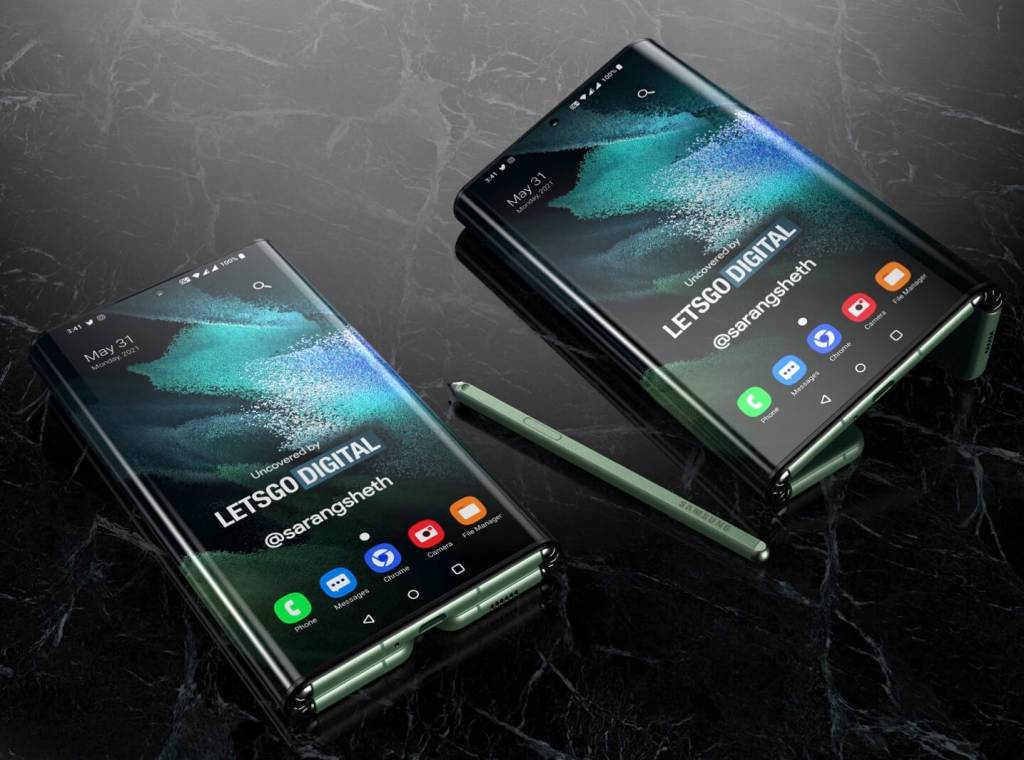
Samsung Galaxy Z Fold Tab concept based on patent illustrations: Phone in stand mode.
The foldable design that Samsung patented looks a lot like one of Xiaomi's early designs for foldable handsets. But Xiaomi's phone did not support bi-directional folding.
The illustrations also show that the side displays would contain magnets, holding in place an S Pen stylus that would fit right between the two side displays. Also, the side displays could support other usage modes, including one where one of the side displays acts as a stand.
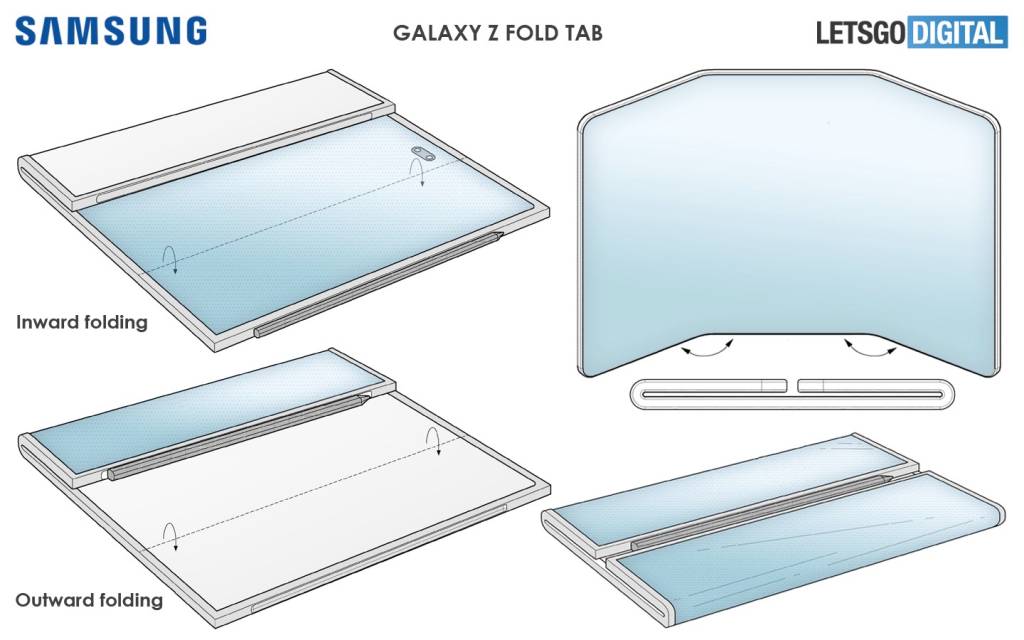
Foldable phone illustrations from Samsung patents.
That said, there's no guarantee that Samsung will launch such a foldable device anytime soon or that it'll be able to manufacture one anytime soon. After all, Samsung already experienced a less than spectacular Galaxy Fold launch when it realized real-life usage of a foldable device might reveal fragility issues that did not come to light during in-lab testing. A device with a massive wraparound foldable screen might be more challenging to make than the Fold.
